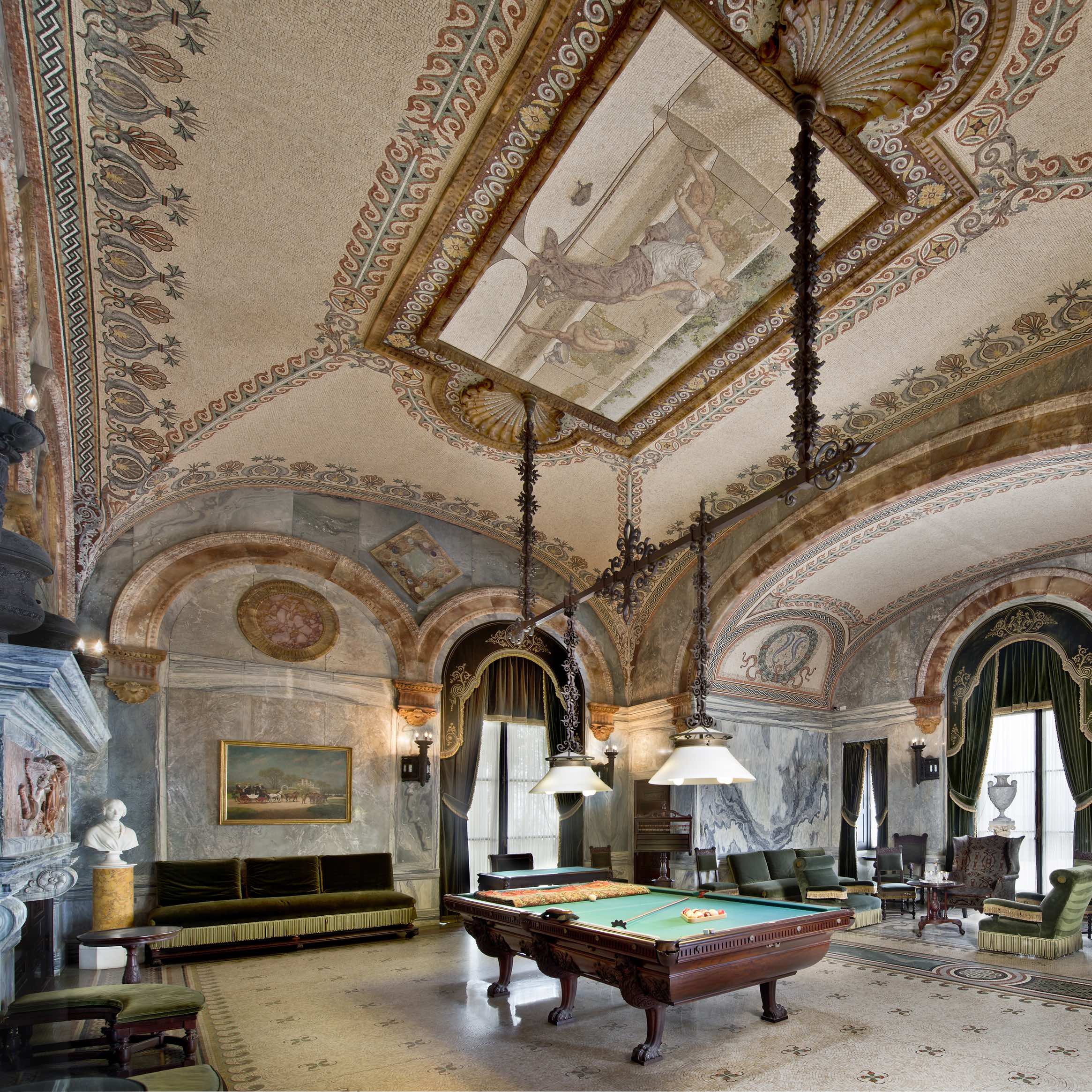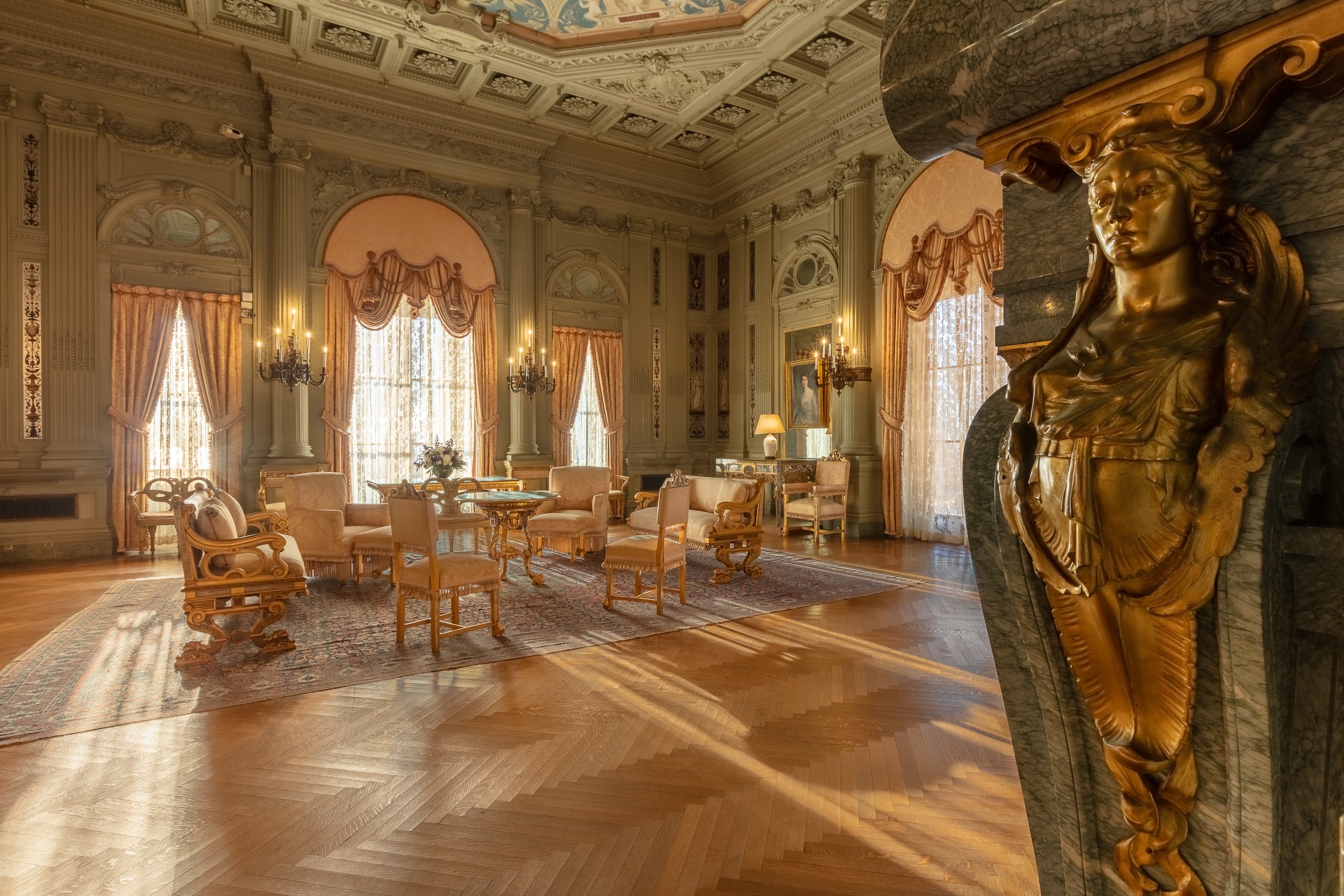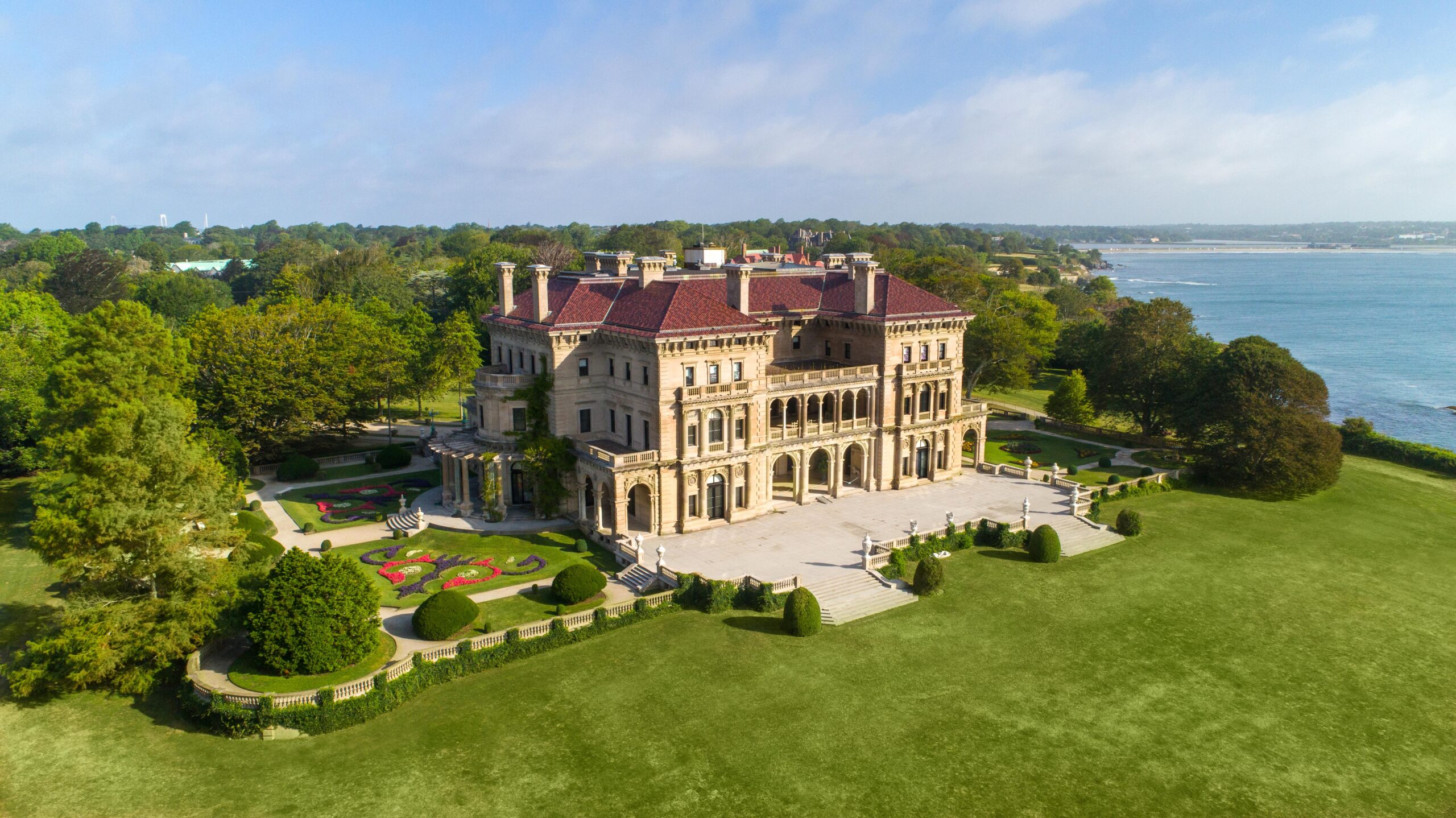In the autumn of 1885, Cornelius Vanderbilt II paid a little over $400,000 for a summer cottage in Newport, Rhode Island. The Queen Anne style house, built in 1878, was considered the “crown jewel” of Newport. It had been designed by the architectural firm of Peabody and Stearns for Pierre Lorillard IV, whose fortune came from the Lorillard Tobacco Company. He bred thoroughbred race horses and financed archaeological expeditions to South and Central America. He helped to make Rhode Island a yachting center as well. The house was situated along Cliff Walk in Newport, with an amazing view of the ocean.
When Cornelius Vanderbilt II acquired the “cottage,” he hired Peabody and Stearns to oversee $500,000 in renovations to it, but in 1892 a fire that started in the kitchen largely destroyed the house. Vanderbilt decided to demolish the ruined house, right down to its foundations, and build anew. He brought in architect Richard Morris Hunt, who had worked for the Vanderbilt family in New York, and expressed to him his great concern about the new house being fireproof. Hunt responded by creating a design that would cost $7 million to build—even in 1893.


The bones of the estate would be steel, brick, and Indiana limestone. Rather than using wood framing, the architect created masonry arches on steel beams. The boiler room was in a detached building and connected to the main house by an underground steam tunnel. What rose from the original foundations was not simply a reconstruction of the old house, but a grand edifice in the style of the Italian Renaissance. It would be the grandest Gilded Age mansion of Newport. In fact, the new Breakers is much larger than the original house, of which the remaining foundations made up only part of the base of Hunt’s grand masterpiece. Hunt took his inspiration for The Breakers from Peter Paul Rubens’s book “Palazzi di Genova,” written in 1622. He acquired the book on a trip to Genoa and referred to its detailed illustrations as he created a Renaissance villa for the Vanderbilts.
Approaching the mansion from the street, it appears to be three stories high (it is actually five). As you enter the foyer, there is a gentleman’s reception room to the right and a ladies’ reception room to the left. Continuing straight, you step into the immense Great Hall. Rising 50 feet above with its great balconies, the Great Hall creates the illusion of an Italian open courtyard, or cortile. Hunt organized the rooms of the mansion around this central space, in the manner of the villas depicted in “Palazzi di Genova.” The firm of Allard and Sons of Paris created the interiors, importing the finest materials for its work. Austrian sculptor Karl Bitter created the relief sculpture in the estate. Ogden Codman, a Boston architect, oversaw the design of the family quarters.


For the grand view of the ocean, Hunt created the double loggia (covered exterior galleries, one above the other, created primarily as a place for sitting). The lower loggia has a vaulted ceiling covered in mosaic, and the upper loggia is painted to resemble canopies against the sky. The spandrels (panels) of the loggia arches feature figures representing the four seasons of the year. The materials and the artisans were imported from overseas. Inspired by the palaces and villas of 16th-century Genoa, Hunt drew from classical Greek and Roman motifs to create the splendor of The Breakers. While the exterior is constructed of Indiana limestone, the walls of the Great Hall are made of carved Caen limestone imported from the coast of France. The walls are inset with plaques of rare marbles such as pink marble from Africa and green marble from Italy.
The Great Hall’s pilasters (embedded columns) and medallions (circular decorations) are decorated with acorns and oak leaves, representing strength and longevity, symbols of the Vanderbilt family. On top sits a massive cornice that frames a ceiling mural of a windswept sky. Hunt enclosed the space in consideration of Rhode Island’s New England climate, but he quite successfully retained the illusion of an open courtyard. The contrast of the elaborately detailed cornice against the painted sky reinforces that feeling, as does the large glass wall between the hall and the loggias.


Projecting from the estate’s south wing is the oval Music Room. Richard Van der Boyen designed the intricate woodwork and furnishings. Jules Allard and Sons built all the woodwork in their shops in Paris and shipped it to America for installation. Used originally for recitals and dances, the Music Room was featured in an episode of Julian Fellowes’s HBO series “The Gilded Age.”
The gardens of the 70-room estate were designed by Boston engineer Ernest W. Bowdtich, who was a student of Frederick Law Olmsted. Trees were carefully placed to increase the sense of distance between The Breakers and the neighboring houses. The enormous gate of the property and the wrought iron fence are flanked with rhododendron, mountain laurel, and other flowering shrubs to create a secluded place. Footpaths wind around the tree-shaded grounds, all of which provide a very natural backdrop for the more formal terrace gardens.

Paying homage to the original Breakers, Robert Swain Peabody and John Goddard Stearns, who designed the original house, were commissioned to create The Playhouse in the garden. It was a small, Queen Anne Revival style cottage, reminiscent of their original design, which was used as a children’s playhouse.
Cornelius Vanderbilt II died in 1899. He was 56. Alice, his wife, outlived him by 35 years. Not unlike the fictional Crawley family of “Downton Abbey,” the Vanderbilts faced the reality that such an estate, with its army of servants, was becoming increasingly difficult to maintain. Alice gave the mansion to her youngest daughter Gladys (Countess Széchenyi), who was an active supporter of the Preservation Society of Newport County. She opened the house for visitors in 1948, leasing it to the society for a dollar a year. The society eventually purchased The Breakers in 1972 for $365,000—slightly less than what Mr. Vanderbilt paid for the property almost a century before.
This article was originally published in American Essence magazine.













